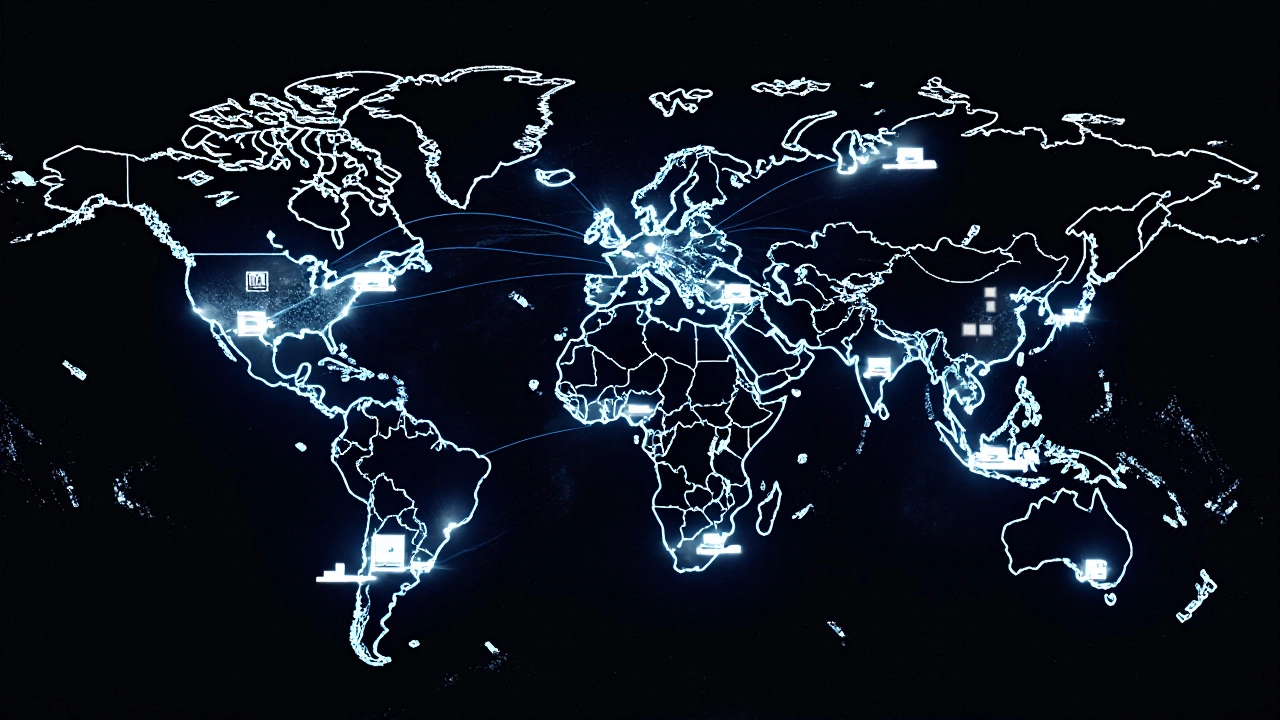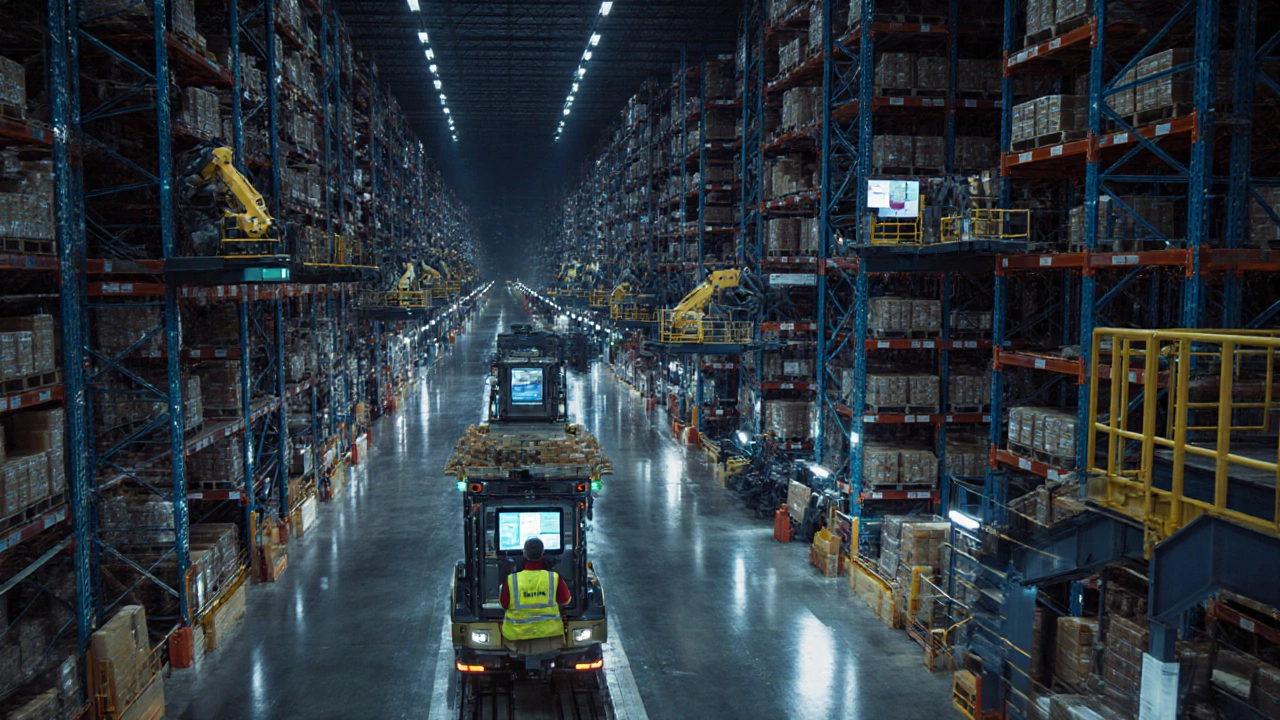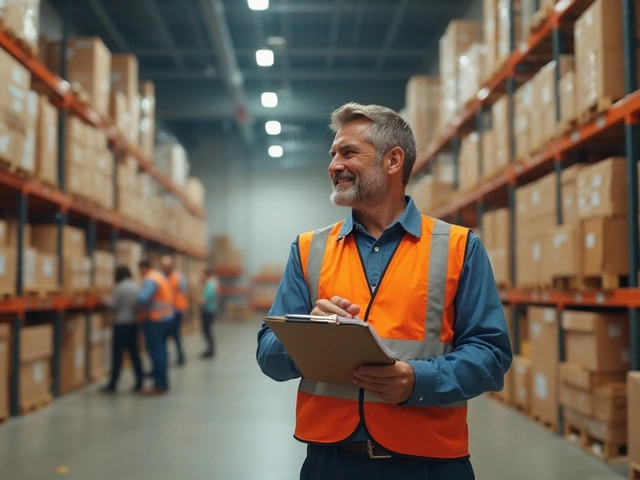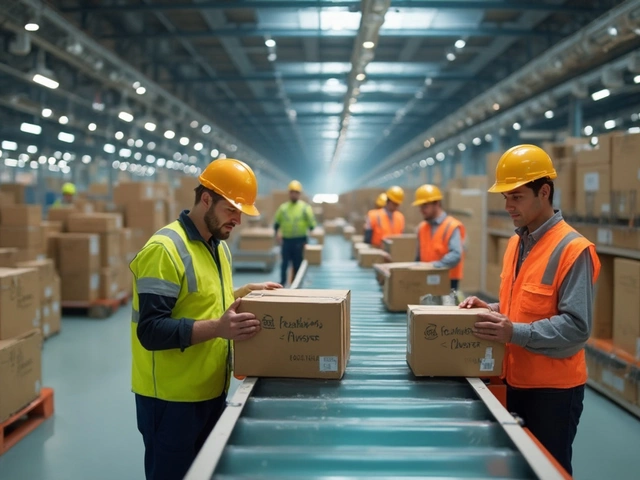Logistics Solution Advisor
Determine Your Logistics Needs
Your Logistics Recommendation
People often think a warehouse is the biggest thing in logistics. But if you’ve ever seen a distribution center in action-thousands of pallets moving, robots zipping between aisles, hundreds of trucks loading at once-you realize a warehouse is just one piece of a much larger puzzle.
What’s Actually Bigger Than a Warehouse?
The answer isn’t one thing. It’s a system. A distribution center is bigger in scale, speed, and complexity than a typical warehouse. But even that’s not the full picture. Beyond distribution centers come fulfillment hubs, regional logistics networks, and finally, the entire supply chain that connects factories, ports, trucks, and final delivery points across continents.Think of it this way: a warehouse stores goods. A distribution center moves them-fast, accurately, and at massive volume. And a logistics network? That’s the brain and nervous system making sure everything flows without breaking down.
Distribution Centers: The Real Powerhouses
A standard warehouse might be 100,000 square feet. A modern distribution center? Often 1.5 million square feet or more. Amazon’s distribution centers in the U.S. average 1.2 million sq ft. Some in China and Europe hit 2 million.But size isn’t just about square footage. It’s about throughput. A warehouse might handle 5,000 orders a day. A top-tier distribution center handles 500,000. That’s not just more space-it’s more robots, more conveyor belts, more software, more people, and more integration with shipping carriers.
These centers aren’t just storage. They’re sorting hubs. They receive full truckloads from manufacturers, break them down, sort items by destination, and repackage them for final delivery. They work 24/7. They use real-time inventory tracking. They’re designed to turn inventory over in under 48 hours.
Fulfillment Hubs: Where E-Commerce Lives
If you’ve ordered anything online in the last year, you’ve interacted with a fulfillment hub. These are a hybrid of warehouse and distribution center, but built for speed and personalization.Fulfillment hubs sit closer to cities. They hold inventory for online retailers like Shopify stores, Amazon sellers, or fashion brands. When you click ‘buy’, the order goes straight to the nearest hub. Within minutes, a robot picks your item. A human double-checks it. Then it’s packed and handed to a courier-often the same day.
These hubs don’t just store. They return items, repackage damaged goods, run promotions, and even assemble gift sets. They’re the reason you got your order in two days instead of two weeks. And they’re growing fast. In 2025, over 70% of online retailers in North America and Europe rely on third-party fulfillment hubs.

Logistics Networks: The Invisible Web
Now, imagine linking dozens of distribution centers and hundreds of fulfillment hubs across a country-or across the globe. That’s a logistics network. It’s not a building. It’s a system.A logistics network includes:
- Warehouses and distribution centers
- Trucking routes and rail yards
- Port terminals and customs clearance points
- Software that tracks every package in real time
- Partnerships with carriers like FedEx, DHL, and local couriers
This network decides where to store inventory so it’s closest to where it’ll be sold. It reroutes shipments when storms hit. It predicts demand spikes before they happen. In New Zealand, for example, logistics networks adjust for seasonal tourism peaks in Queenstown and winter supply needs in Dunedin-all while keeping costs low.
Without this network, a warehouse is just an empty building. With it, you can move a million packages a day across half the planet.
Supply Chain: The Bigger Picture
The final layer? The supply chain. It starts with raw materials. A cotton farm in Uzbekistan. A microchip factory in Taiwan. A steel mill in Brazil. It ends with your hoodie on your back, your phone charging, or your coffee brewing.A warehouse sits somewhere in the middle. A distribution center? Closer to the end. But the supply chain connects them all-through trade policies, fuel prices, labor laws, and global events like port strikes or pandemics.
When the Suez Canal blocked in 2021, it didn’t just delay a few ships. It broke supply chains across Europe and Asia. Warehouses ran out of stock. Distribution centers couldn’t get new inventory. Fulfillment hubs had to cancel orders. The whole system felt the ripple.
That’s why companies now design supply chains for resilience, not just efficiency. They keep backup suppliers. They stockpile critical items. They use AI to predict disruptions before they happen.

Why This Matters for Your Business
If you’re running an online store, a warehouse might be enough when you’re small. But once you hit 1,000 orders a week, you need more. You need a fulfillment hub. Once you’re shipping internationally, you need a logistics network.Here’s what happens if you ignore this progression:
- Your delivery times get slower
- Your shipping costs spike
- You lose customers to competitors who deliver faster
- You get stuck with too much unsold inventory
Smart businesses don’t just rent warehouse space. They map their entire flow: where inventory lives, how it moves, and how it reaches the customer. They choose partners based on network reach-not just price.
What Comes Next?
The next step beyond logistics networks? Autonomous logistics. Drones for last-mile delivery. AI that predicts demand down to the neighborhood level. Self-driving trucks moving between hubs. All of this is already being tested in Australia, Germany, and California.But even with all the tech, the core truth stays the same: a warehouse is just a room. What’s bigger? The system that turns that room into a lifeline for millions of customers.
Is a distribution center the same as a warehouse?
No. A warehouse stores goods for long-term use-sometimes months or years. A distribution center moves goods quickly, often within 24 to 48 hours. Warehouses focus on storage. Distribution centers focus on flow. One holds. The other ships.
Are fulfillment hubs only for e-commerce?
Mostly, yes. Fulfillment hubs are built for high-volume, fast-turnover online orders. They handle returns, gift wrapping, and same-day shipping-things traditional warehouses don’t do. But some are starting to serve B2B clients too, like pharmacies or electronics retailers who need quick restocking.
Can a small business use a logistics network?
Absolutely. You don’t need to own one. Third-party logistics providers (3PLs) like ShipBob, Flexe, or even regional players in New Zealand give small businesses access to logistics networks. You pay per order, and they handle storage, packing, and shipping through their connected hubs and carriers.
Why do some companies use multiple distribution centers?
To get closer to customers. Shipping from one central warehouse to New Zealand’s North and South Islands takes longer and costs more than having one in Auckland and another in Christchurch. Multiple centers reduce delivery time, cut fuel use, and make returns easier. It’s not just about speed-it’s about efficiency and customer experience.
How do I know if I need to move beyond a warehouse?
Ask yourself: Are you shipping more than 500 orders a week? Are your delivery times over 5 days? Are you spending more on shipping than on inventory? If yes, you’re ready for a fulfillment hub. If you’re selling across multiple regions or countries, you’re already in the logistics network game-whether you realize it or not.





